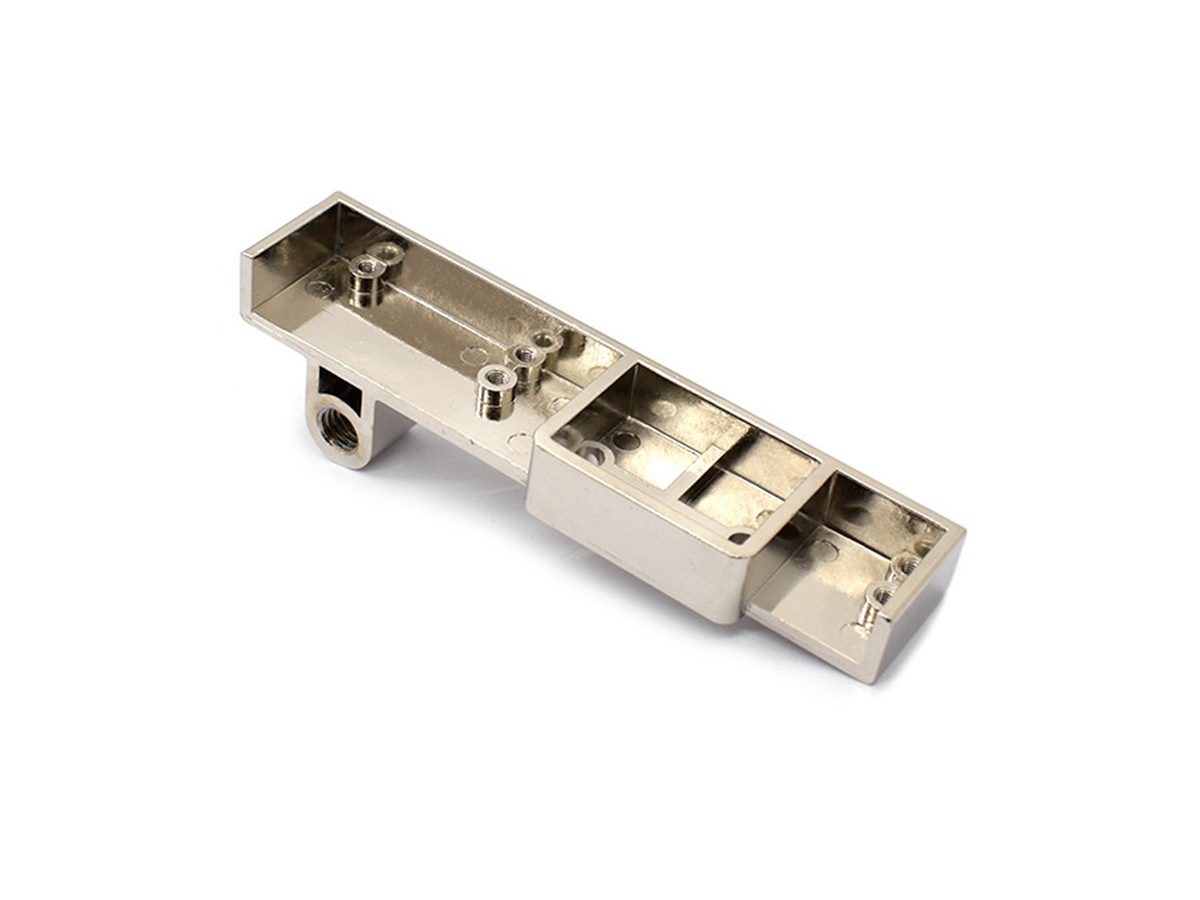Unlocking Innovation: How Zinc Die Casting Powers Next-Generation Wearable Electronics
Introduction: Revolutionizing Wearables with Precision Engineering
Zinc die casting drives innovation in wearable electronics through Zamak die casting, enabling ultra-thin 0.3mm housings for smartwatches and fitness trackers. The hot-chamber process delivers 20-second cycle times, critical for mass-producing lightweight, corrosion-resistant components.
With Zamak 5 providing 330 MPa tensile strength, wearables survive 1.5m drops while weighing 30% less than aluminum. Advanced alloys like ZA-8 ensure seamless Bluetooth/WiFi connectivity with 0.7μΩ·m resistivity, ideal for health monitoring sensors.
Precision Manufacturing for Wearable Devices
Step 1: Micro-Mold Design CNC-machined molds with 0.002mm accuracy replicate ergonomic curves and button slots, optimized for Zamak alloys to eliminate post-processing.
Step 2: High-Speed Injection Molten zinc at 425°C fills 0.3mm cavities in 0.1 seconds via vacuum-assisted casting, achieving 99% density for waterproof (IP68) structures.
Step 3: Laser Micro-Finishing Fiber lasers drill 0.15mm sensor ports with ±5μm precision, ensuring uninterrupted optical heart rate detection.
Material Intelligence: Alloys for Wearable Excellence
Alloy | Key Properties | Applications | Competitive Edge |
|---|---|---|---|
80 HRB hardness, Ra 0.6μm finish | Fitness tracker frames, Charging contacts | 40% lower cost vs titanium | |
330 MPa strength, 1.8% elongation | Smartwatch hinges, AR headset mounts | Survives 100k+ flex cycles | |
0.7μΩ·m resistivity, 115°C stability | ECG sensor housings, Wireless charging coils | 30dB EMI shielding at 2.4GHz | |
99.95% purity | Medical-grade skin sensors | ISO 10993 biocompatibility certified |
Expanded Applications:
Smart Rings: Zamak 5 enables 1.2mm-thin sleep tracking bands.
Hearing Devices: Zamak 7 ensures hypoallergenic surfaces for 24/7 wear.
Surface Engineering: Enhancing Wearable Performance
PVD Coating
Function: PVD coatings create scratch-resistant finishes in rose gold/matte black.
Properties: 1,500Hv hardness, 50+ color options
Applications: Luxury watch bezels, AR glasses frames
Electropolishing
Function: Electropolishing removes micro-burrs on charging pins.
Properties: Ra 0.2μm finish, 60% lower contact resistance
Applications: Smartwatch charging ports, ECG electrodes
Antimicrobial Coating
Function: Teflon coating reduces bacterial growth by 99% (ISO 22196).
Properties: FDA-compliant, 0.04 friction coefficient
Applications: Fitness bands, medical wearables
Competitive Edge: Zinc vs Alternatives
Material | Weight (g) | Cost/Unit | Signal Integrity | Durability |
|---|---|---|---|---|
Zinc Alloy | 12 | $0.80 | 0.2dB loss at 5GHz | 50k+ drop tests |
Aluminum | 8 | $1.50 | 0.5dB loss at 5GHz | 30k drop tests |
Plastic | 5 | $0.30 | 1.2dB loss at 5GHz | 10k drop tests |
Production Excellence: Overcoming Wearable Challenges
Challenge | Technical Solution | Performance Outcome |
|---|---|---|
Thin-Wall Signal Interference | ZA-8 alloy + laser-etched antenna channels | <0.3dB Bluetooth loss |
Skin Irritation Risks | Zamak 7 with medical-grade electropolishing | 0 reported dermatitis cases |
Battery Compartment Leaks | Vacuum casting + 0.05mm sealing ribs | IP68 waterproofing certified |
Color Fading | PVD coating with UV-resistant layers | ΔE <0.5 after 1k sun hours |
Industry Applications: Wearables Redefined
Health & Fitness:
0.3mm-thin SpO2 sensors for continuous blood oxygen monitoring
Sweat-resistant gym earphones with 10hr playtime
Medical:
ECG chest straps detecting atrial fibrillation
Glucose monitoring patches with 14-day wearability
Luxury Tech:
18K gold-plated smartwatch cases
Designer AR glasses with customizable PVD finishes
Case Studies:
FAQs
Can Zamak alloys cause skin allergies in smartwatch bands?
How thin can zinc die cast walls be for AR glasses?
Does PVD coating affect wireless charging efficiency?
What alloy is best for saltwater-resistant fitness trackers?
How does zinc compare to magnesium in wearable weight reduction?

